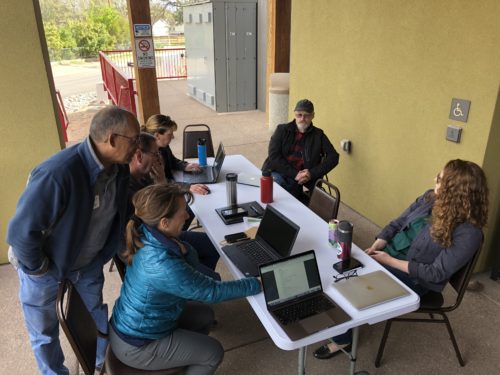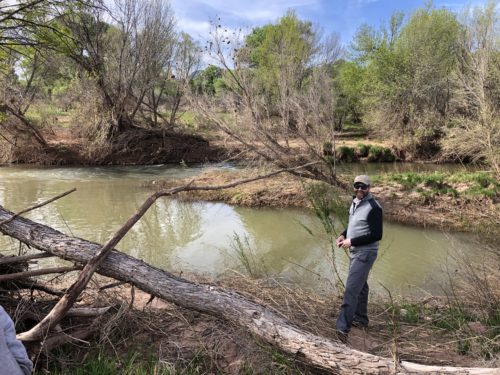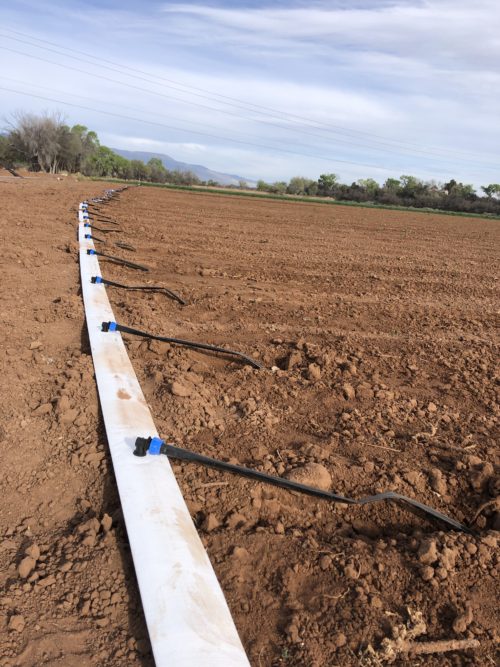The Second Verde River Report Card Workshop
Andrew Elmore ·
The Verde River flows through north-central Arizona and is a
primary water source for Phoenix. As it works its way down from its headwaters
in the Big and Little Chino Basins, the Verde provides excellent habitat for a
wide array of plants and animals. Water from the river also supports
small-scale agriculture, well-watered lawns, and accessible groundwater for
communities. Recreation on the river is an important economic and cultural
resource – if you haven’t yet visited the Verde River you are missing out on
one of the gems of the southwestern US. Due to the many values we place on the
Verde, management of the river is complicated and many stakeholders are engaged
in the process. This is a perfect system to apply the Environmental Report Card
method.
April 4-5 Heath Kelsey and Andrew Elmore visited the Verde River to work with stakeholders from around the region to continue the process of developing a Verde River Report Card. The report card will have 3 main themes: Water, Habitat, and Communities. The report card recognizes that a healthy river requires thriving communities of people who value the river in multifaceted ways. This is one of the more interesting report cards we have ever worked on due the incredible engagement we are experiencing with stakeholders and their determination to indicate the health of the watershed in relevant and meaningful ways. Here are some of the stories we heard during the workshop.

Water is Life
As members of the Yavapai-Apache Nation have said for centuries, “Water is Life”. Today, as always, water is a necessity, which makes it something to be examined, rationed, and traded. There are 42 ditches on the Verde, each with an establishment date that equates to a water claim by someone living along each ditch. However, with water claims going back more than a century everyone’s memory is a bit foggy, not to mention the claims of all the people living here before Europes arrived. Therefore, Verde river water is destined for the courts. The adjudication process is expected to bring water-right certainty to the Verde River, but it is also destined to be a stressful process for many involved.

Water is Habitat
The presence or absence of water on the landscape strongly
influences the type of habitat available for wild plants and animals. In the
upland regions, forests and shrublands support diverse communities dependent on
reoccurring wildfire. Riparian zones support diverse bird communities,
frequented by bird watchers of all ages. And the river itself supports native
and introduced fish, many of which are targeted by anglers. But changes in
water flows and climate change threaten to shift the location and spatial
extent of these different habitats. Therefore, tracking and protecting the
biodiversity of the Verde watershed over time is an important challenge for
many stakeholders. Questions such as: “How much water does a fish need to
swim?” are more than academic, especially if the answer will be applied in a
rigorous way to water management throughout the basin.

Water is Community
Thriving communities that are economically stable and within
which the children are healthy and well-educated, have the best chance of
succeeding in conserving the values we place on the Verde River. Many
businesses in the basin depend on the river, either directly through water for
agriculture and recreational boating, or indirectly through the provision of a
quiet place to sit and enjoy the river with a glass of wine. But the river
itself supports and depends on these communities, therefore threats to healthy
communities are closely tied to threats to the river itself. Continued
engagement throughout the community is the most promising tool of conservation.
Environmental organizations in the Verde watershed hold many events throughout
the year and host volunteer efforts to clean up and conserve the river. The
success of these initiatives is one indicator of engagement, useful to tracking
the health of this river community.
About the author
Andrew Elmore

Dr. Elmore is Professor of landscape ecology at the University of Maryland Center for Environmental Science, Appalachian Laboratory and at the National Socio-environmental Synthesis Center. He works broadly across issues relevant to global environmental change, with a particular interest in ecosystem interactions with land-use and land-cover change. Recent work has focused on the effect of groundwater decline on wind erosion and air quality in deserts; the impact of urban stream burial on stream network structure and functioning; modeling coastal habitat change associate with sea level rise; and, understanding forest responses to changes in spring and autumn timing associated with climate change. He applies an array of tools to these problems, but has made the greatest impact on methods for analyzing satellite and airborne remote sensing data. Dr. Elmore received a BSc in Applied Physics from Purdue University and an MSc and PhD in Geoscience from Brown University. He worked as a postdoctoral scholar at the Carnegie Institution for Science and Dartmouth College before moving to Maryland.

